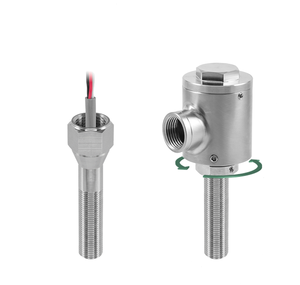Introduction
Magnetic proximity switches are critical components in the automation market. They are used to detect the presence or absence of ferrous metals in machines, processes, and systems. In this article, we will explore the different types of magnetic proximity switches available, their applications in the automation market, and the benefits they offer.
Types of Magnetic Proximity Switches There are two main types of magnetic proximity switches used in the automation market:
- Reed Switches: Reed switches consist of two ferromagnetic blades enclosed in a glass tube. The blades are separated by a small gap, and when a magnetic field is applied, the blades come into contact, closing the switch. Reed switches are simple and reliable, but they have limited life due to the wear and tear of the blades.
- Hall Effect Sensors: Hall effect sensors use the Hall effect to detect magnetic fields. When a magnetic field is applied, the sensor generates a voltage proportional to the strength of the field. This voltage is then amplified and processed to determine the presence or absence of a ferrous metal. Hall effect sensors are more durable than reed switches and have a longer lifespan.
Applications of Magnetic Proximity Switches in the Automation Market Magnetic proximity switches have numerous applications in the automation market. Some of the most common applications of magnetic proximity switches in the automation market include:
- Position Sensing: Magnetic proximity switches are used in position sensing to detect the position of machine components, such as doors, hatches, and valves. This allows for precise control of machine movement and can improve efficiency and safety.
- Speed Sensing: Magnetic proximity switches are used in speed sensing to detect the speed of rotating machine components, such as gears, pulleys, and shafts. This allows for precise control of machine speed and can improve efficiency and accuracy.
- Object Detection: Magnetic proximity switches are used in object detection to detect the presence or absence of objects in machines, processes, and systems. This allows for automated sorting and processing of materials, improving efficiency and reducing errors.
Benefits of Magnetic Proximity Switches in the Automation Market Magnetic proximity switches offer several benefits in the automation market, including:
- Non-Contact Operation: Magnetic proximity switches operate without physical contact, which reduces wear and tear and extends their lifespan.
- High Accuracy and Precision: Magnetic proximity switches provide accurate and precise detection of ferrous metals, allowing for precise control of machine components and processes.
- High Reliability: Magnetic proximity switches are highly reliable and can withstand harsh operating conditions, such as vibration, shock, and extreme temperatures.
Conclusion
Magnetic proximity switches are critical components in the automation market, providing precise and accurate detection of ferrous metals in machines, processes, and systems. There are two main types of magnetic proximity switches available, reed switches and Hall effect sensors, each with its own set of advantages and disadvantages. Magnetic proximity switches have numerous applications in the automation market, including position sensing, speed sensing, and object detection. They offer several benefits, including non-contact operation, high accuracy and precision, and high reliability. With their widespread use and versatility, magnetic proximity switches are likely to remain an integral part of the automation market for many years to come.
